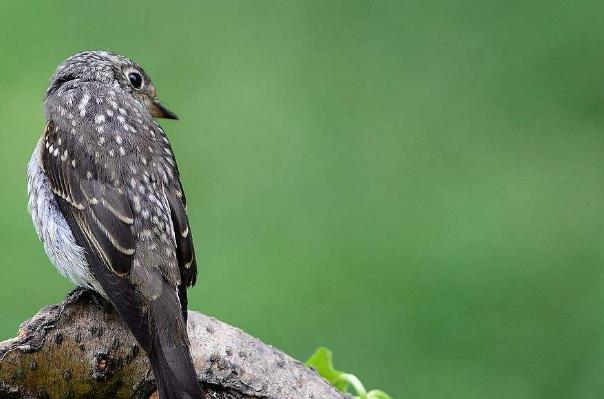Muscicapa sibirica): Weighs 9-15 g and has a body length of 12-14 cm. The male and female plumage are similar in color. The upperparts are greyish brown , the middle of the feathers on the top of the head is darker , and the first and around the eyes are white or yellowish-white. The two winged coverts and flight feathers are dark brown, the upper winged large coverts and tertiary flight feathers are pale brownish white, the primary flight feathers are tan at the inner margins, the secondary flight feathers are white, and the tail is grayish brown or black brown. The chin and throat are white or dirty white , the thorax and flanks have coarse greyish-brown longitudinal stripes or are all dark grey , and the ventral and undertail coverts are white. The iris is dark brown, the mouth is dark brown, the base of the lower mouth is lighter, and the feet are black.

In northeast China, it overwinters in South China, East China, Hainan Island and Taiwan; Southwest Asian species breed in Qinling, southeast Gansu, southeast Qinghai, eastern Tibet and Sichuan in southern Shaanxi, and winter in the south; And South Tibetan species breed in southern Tibet.
It mainly inhabits mixed coniferous and broad-leaved forests and coniferous forests above 800 meters above sea level, and can go up to the upper edge of the forest line and subalpine dwarf curved forests, in the Himalayas in the summer it can reach an altitude of 3200-4200 meters above sea level, and in the Summer of Changbai Mountain to the alpine Yue Birch Dwarf Forest area at an altitude of about 1800 meters. It also inhabits deciduous and evergreen broad-leaved forests, secondary forests and sparsely forested shrublands at the foot of mountains and plains during the migration season and winter. The black wren is mainly a summer migratory bird in China, and some of it remains in China for wintering. Arrive at the northeast breeding ground at the end of April and the beginning of May, arrive at the southern breeding ground slightly earlier, and move away from the breeding ground in September and October to fly to the wintering ground, except for the breeding period in pairs, other seasons are more alone. Arboreal, often in the canopy of tall trees, rarely moving down to the ground and foraging. They often jump and fly back and forth between branches to prey, and also feed on the branches of the canopy. When resting, it is often perched on the top branches of the tree, and after catching food, it is more likely to return to the original perch to rest.
The breeding season is from May to July. Nests usually occur on trees in mixed coniferous and coniferous forests, especially on the side branches of pine trees in mountain streams, river valleys and interforested forests. It is more than 5-30 meters away from the city, made of gray-green pine rose (a fungus), often hidden in the pine fungus bush on the side branches, and the moon is also a little hay, with a little hay inside the moon pine needle and whisker root. The nest is cup-shaped and hemispherical, with the entrance and exit upwards, and the structure is more delicate. The size of the nest is 8-9 cm outside diameter, inner diameter 5-6 cm, height 5.5-6 cm, depth 2.5-3 cm. Male and female nest together, but mainly female birds, each nest can be completed in 5-7 days. Spawning begins in late May and early June, with 4-5 eggs laid per clutch. The eggs are pale green